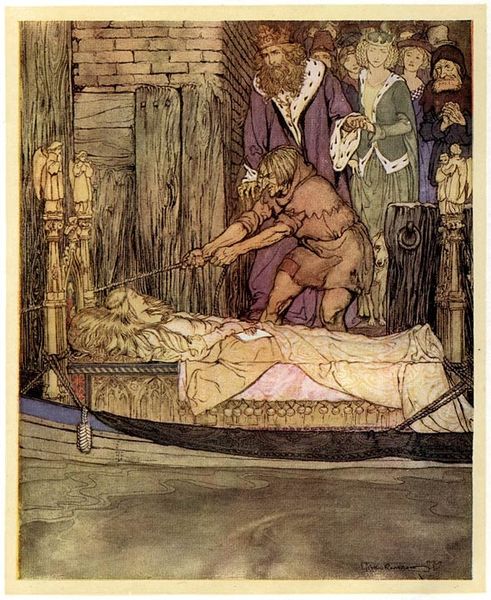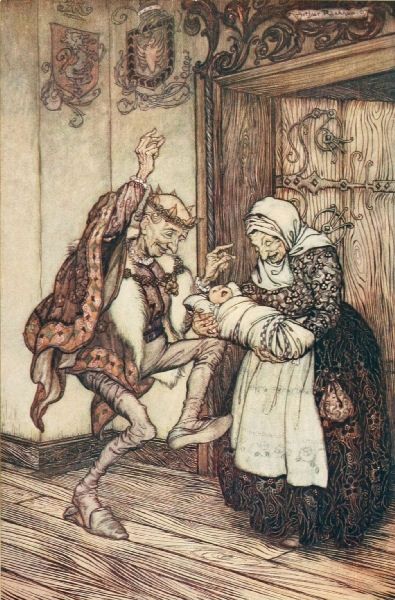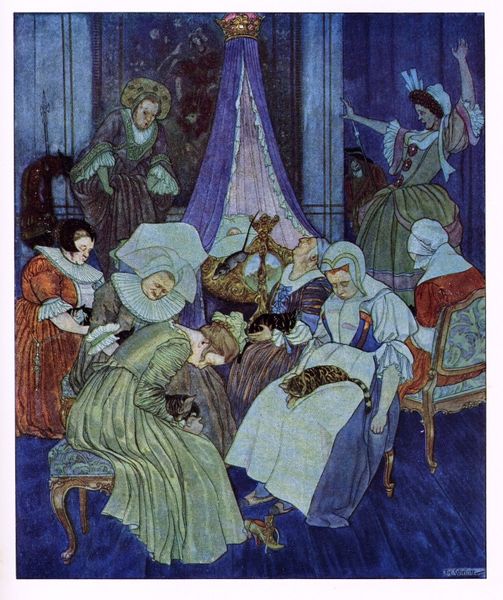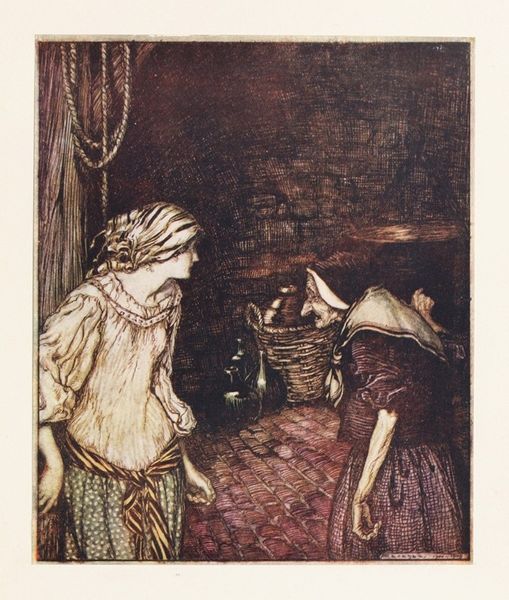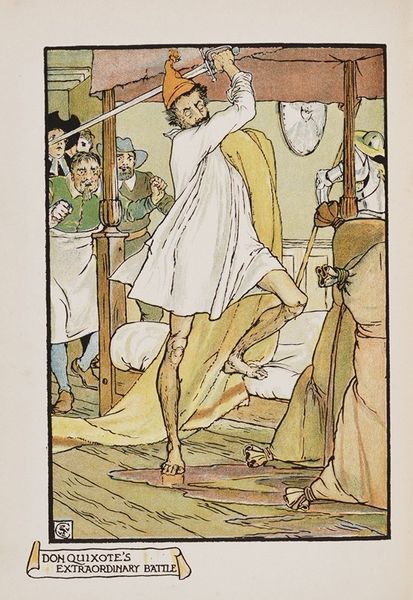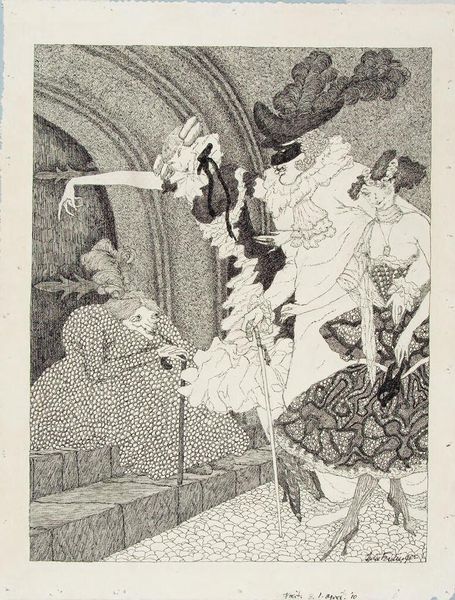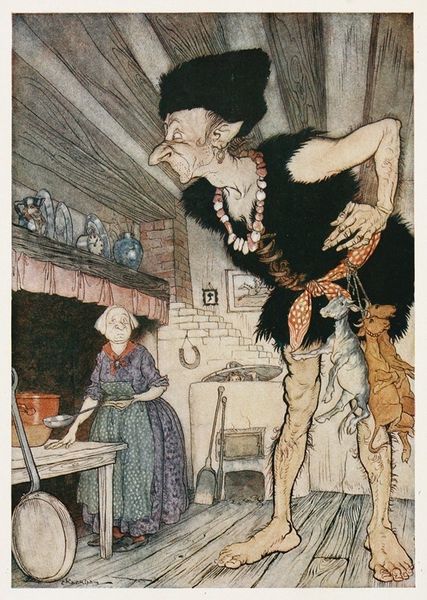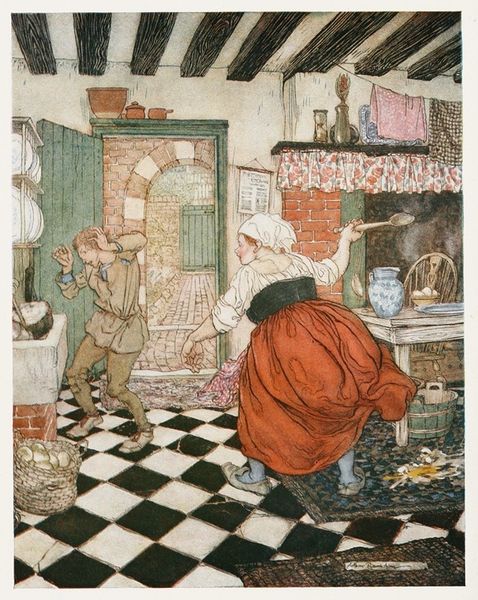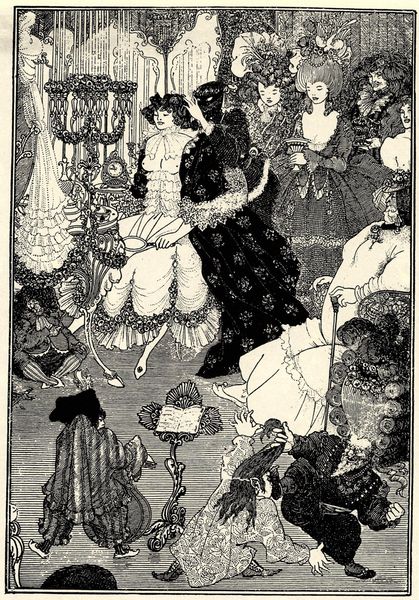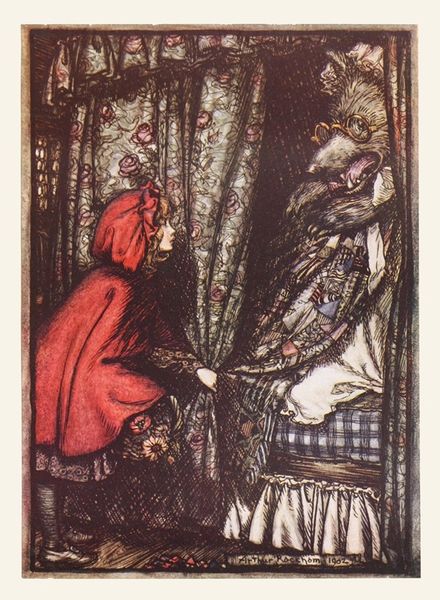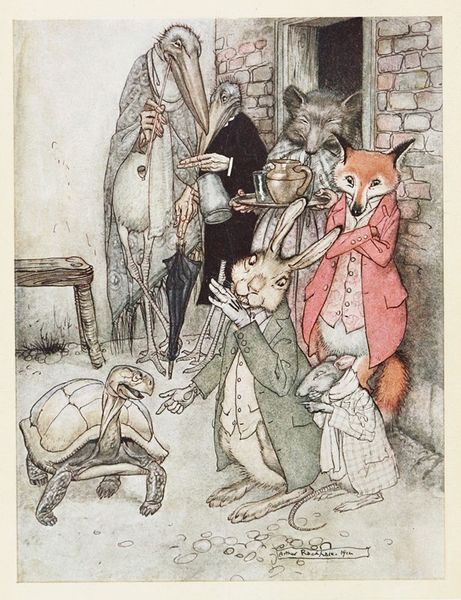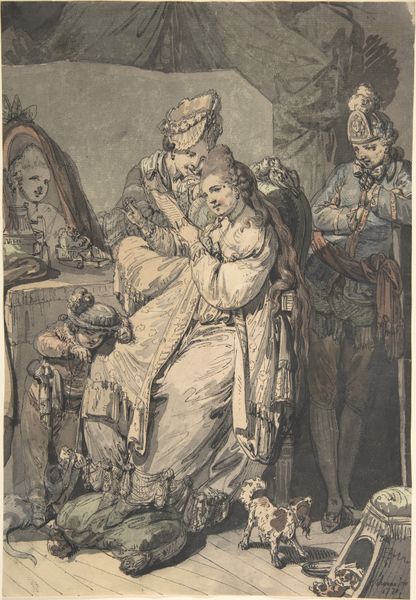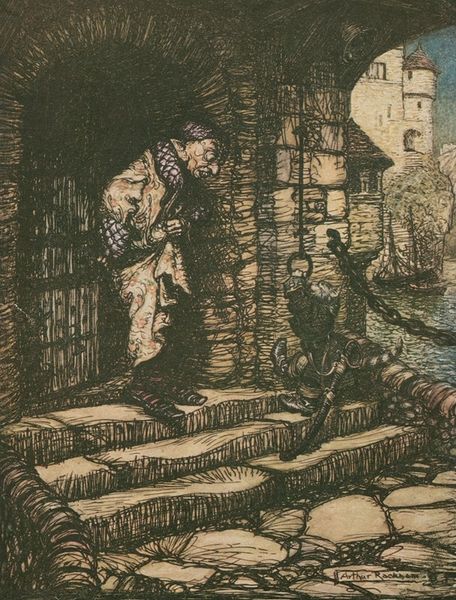
painting, watercolor
#
medieval
#
narrative-art
#
painting
#
figuration
#
watercolor
#
history-painting
#
watercolur painting
Copyright: Public domain
Curator: Arthur Rackham, an accomplished artist of the late 19th and early 20th centuries, created this compelling watercolor entitled "Galahad draws the sword from the floating stone." Editor: What immediately strikes me is the dreamlike quality, and a quiet intensity. The pale colors enhance a kind of otherworldliness. Even though there's a crowd, there is an absolute stillness. Curator: Rackham certainly had a flair for infusing mythical themes with such delicacy. You’re right, this tableau represents a pivotal Arthurian moment, focusing not on Arthur himself but on Galahad's purity and destiny, themes popular in the pre-war, fin-de-siècle artistic imagination. The gathering of onlookers signifies how monumental this event is, but their muted tones contrast strongly with Galahad's attire. Editor: Precisely. Look at how Rackham employs those muted, earthy colors for everyone, save Galahad. It isolates him but also places emphasis on him as being unlike others; divinely touched and ready to fulfil his destiny. He's set off from the rest of humanity in this visual design. But beyond the color palette, note the very structure and line quality used for everyone. It’s quite beautiful! Curator: Rackham's background in illustration is palpable here. He masterfully constructs narrative, not merely as a depiction, but as a symbolic theater of sorts. The sword, for example, isn't just a sword; it’s the keystone to a changing world. I am certain that the historical context matters here in interpreting it in line with Britain's waning colonial project. Editor: You mention that Rackham has a background in illustrations. You see his background being more in play within narrative, not, let’s say, an inherent and purely decorative gesture. This piece feels highly staged, not to say, forced to some degree. Is there historical evidence of a prevailing art atmosphere that leans toward that specific style? Curator: Absolutely. During the late Victorian and Edwardian periods, there was a marked enthusiasm for medieval romances, Arthurian tales particularly, offering an escapism from societal and industrial shifts, while simultaneously instilling morals through romanticized characters like Galahad, as the ideal and destined King of Great Britain. Editor: It seems more like Rackham taps into Britain’s yearning for hope through medieval nostalgia amid a tumultuous historical epoch. He encapsulates a complex array of aesthetic values and national aspirations in one picture. It is quite fascinating. Curator: Agreed. Viewing it through this prism has certainly deepened my appreciation of it, especially when it is juxtaposed against what art represents today. Editor: Mine, as well. I must admit that his artistry has an emotional hold, as if transporting us back to his age when hope lay beyond those turrets.
Comments
No comments
Be the first to comment and join the conversation on the ultimate creative platform.
